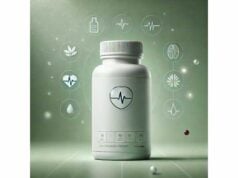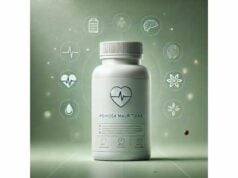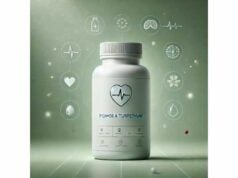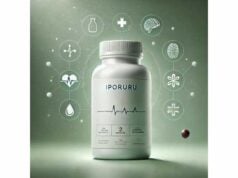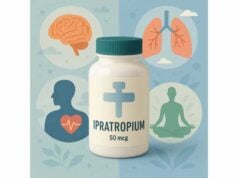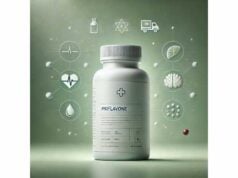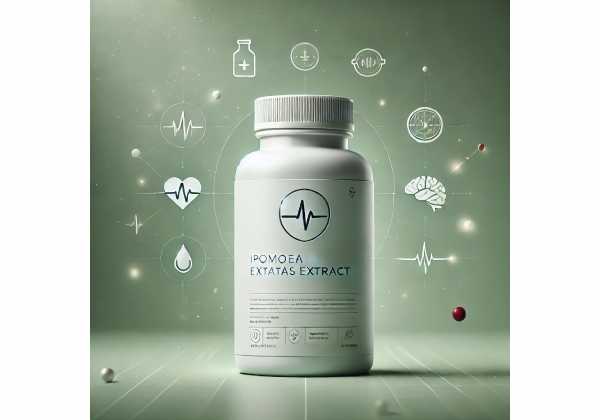
Ipomoea batatas extract—derived from the sweet potato’s tuber, peel, or leaves—packages pigments and polyphenols (notably anthocyanins and caffeoylquinic acids) into concentrated form. These compounds are researched for antioxidant, anti-inflammatory, and metabolic support properties, with white-fleshed tuber extracts (often called “Caiapo”) studied in type 2 diabetes and purple varieties prized for their acylated anthocyanins. Unlike stimulant botanicals, sweet potato extracts lean “food-like”: most users aim for steady support of post-meal glucose, lipid balance, gut comfort, and skin health rather than acute stimulation. This guide explains what the extract is, how it may work, realistic benefits and use cases, how to choose a form, evidence-based dosage ranges, and safety guardrails so you can make a careful, informed decision with your clinician.
Quick Overview
- Purple sweet potato anthocyanins and white-flesh Caiapo show signals for better post-meal glucose and antioxidant status.
- Most common adult intake: 300–600 mg/day for standardized extracts or 1,000–2,000 mg/day for non-standardized capsules; follow product directions.
- Do not self-use as a sole therapy for diabetes; monitor if you take glucose-lowering drugs.
- Avoid during pregnancy or breastfeeding unless a clinician agrees; skip if you have oxalate kidney stones or allergy to Convolvulaceae.
Table of Contents
- What is Ipomoea batatas extract?
- Does it really work? Benefits you can expect
- How to use: forms and preparations
- How much to take: dosage and timing
- Safety, side effects, and who should avoid
- What does the research say today?
What is Ipomoea batatas extract?
Ipomoea batatas extract is a concentrated preparation from the sweet potato plant—most often from the tuber (flesh or peel), but increasingly from leaves and stems. While the orange-fleshed staple is valued for beta-carotene and resistant starch, supplement makers typically focus on two chemistries:
- White-fleshed tuber extract (“Caiapo”): a water-soluble powder standardized to phenolics from white or light-cream cultivars. It’s marketed for supporting healthy glucose and cholesterol in people managing diet-controlled type 2 diabetes.
- Purple sweet potato (PSP) anthocyanin extracts: rich in acylated anthocyanins (commonly cyanidin or peonidin derivatives) that are unusually heat- and pH-stable. These pigments act as antioxidants and appear to influence inflammatory and metabolic pathways in preclinical models.
Other sweet potato parts bring different strengths:
- Peels concentrate phenolics and fiber, making peel extracts attractive for antioxidant and microbiome-friendly applications.
- Leaves (a common vegetable in Asia and Africa) are loaded with caffeoylquinic acids and flavonoids; leaf extracts are explored for metabolic and vascular support.
Key bioactives found across extracts include:
- Anthocyanins (purple cultivars): acylated forms that resist digestion in the upper gut and reach the colon, where they interact with the microbiota and are metabolized to smaller phenolics.
- Caffeoylquinic acids (chlorogenic-acid family): linked to modulation of carbohydrate digestion and gut hormones.
- Flavonoids and phenolic acids: quercetin, rutin, ferulic, and p-coumaric acids, among others.
- Carotenoids (orange cultivars): beta-carotene and lutein provide antioxidant and provitamin A activity, though most “extract” products emphasize polyphenols rather than carotenoids.
- Resistant starch and soluble fiber (in whole-food powders): support satiety and a healthier post-prandial glucose curve.
You will see a variety of manufacturing approaches:
- Aqueous extracts (gentle, food-like) preserve hydrophilic phenolics.
- Hydroalcoholic extracts pull a broader phenolic profile.
- Standardization may be expressed as “% total anthocyanins,” “% total phenolics (gallic acid equivalents),” or by a stated raw-material ratio (e.g., 10:1).
- Color-stabilized anthocyanins may be labeled by E-numbers for food use; supplement versions prioritize purity and dose over coloring power.
Naming note: “Caiapo” refers to a specific white-sweet-potato tuber extract used in published trials; not every “sweet potato extract” is Caiapo, and not every purple anthocyanin ingredient behaves like Caiapo. Always check species (Ipomoea batatas), part used, cultivar color, extraction solvent, and standardization so your choice matches your intent.
Use cases cluster into three buckets: (1) metabolic (post-meal glucose, lipids), (2) antioxidant and inflammatory tone (exercise recovery, vascular health, skin), and (3) digestive comfort when a gentle, food-adjacent polyphenol source is preferred over stimulants. Think of Ipomoea batatas extract as a supportive adjunct rather than a stand-alone therapy.
Does it really work? Benefits you can expect
Metabolic support (post-meal glucose and insulin sensitivity). The best-known findings revolve around white-flesh tuber extract (Caiapo), which, in diet-treated adults with type 2 diabetes, has been associated with improvements in fasting glucose, two-hour OGTT values, and HbA1c over several months in randomized settings. Purple anthocyanin extracts add a complementary angle: their acylated pigments may slow carbohydrate digestion, modulate incretin signaling, and support insulin sensitivity, producing gentler rises in post-prandial glucose in animal and pilot human work. For everyday users without diabetes, the realistic benefit is smoother post-meal curves when taken with carbohydrate-rich meals—while remembering that dietary pattern and activity have the greatest effect size.
Antioxidant and anti-inflammatory activity. Ipomoea batatas polyphenols scavenge reactive oxygen species in vitro and up-regulate endogenous antioxidant enzymes (e.g., catalase, SOD) in preclinical models. Anthocyanins interact with Nrf2 and can inhibit NF-κB signaling, two hubs that influence cellular defense and low-grade inflammation. In practical terms, users most often notice this as better recovery from training, less “post-meal slump,” or subjective improvements in skin tone when extracts are paired with a diet rich in vegetables and adequate protein.
Gut and microbiome friendly. Unlike stimulant botanicals, sweet potato extracts pair polyphenols with prebiotic-compatible matrices. Anthocyanins that escape upper-gut absorption reach the colon, where microbes metabolize them into smaller phenolic acids that may exert local anti-inflammatory and barrier-supportive effects. Whole-food powders that retain fiber and resistant starch can encourage softer glycemic responses and improved satiety.
Cardiometabolic markers beyond glucose. Small clinical and preclinical studies suggest modest improvements in total cholesterol and triglycerides, and anthocyanins in general are linked to healthier endothelial function. Expect subtle shifts that complement diet, movement, and medical therapy rather than dramatic stand-alone changes.
Skin and vascular colorants with function. Purple sweet potato anthocyanins are unusually pH- and heat-stable, making them attractive as natural colorants that also contribute antioxidant capacity. In functional foods or beverages, this means you can get both color and a dose of bioactives if the product is standardized and dosed appropriately.
What to not expect: Ipomoea batatas extract is not a replacement for diabetes medication, weight-loss drugs, or lipid-lowering therapy. Evidence for fat loss, muscle building, or cognitive enhancement is preliminary. If you need medical therapy, treat sweet potato extract as a supportive adjunct chosen for tolerability and “food-like” synergy with your meals.
How to use: forms and preparations
Because “sweet potato extract” can mean different parts and chemistries, match the form to your goal:
- White tuber extract (Caiapo-type): Choose when your priority is post-meal glucose and a well-tolerated, food-adjacent option. Look for a clear label stating Ipomoea batatas, tuber, extraction method (water or aqueous ethanol), and either standardization to phenolics or an extract ratio (e.g., 10:1).
- Purple anthocyanin extract: Choose for antioxidant support, colorful functional beverages, and complementary metabolic effects. Seek products standardized to total anthocyanins (e.g., 15–35%) and preferably specifying acylated anthocyanins.
- Leaf extract: Consider when you want caffeoylquinic-acid–rich polyphenols and a greener profile. Verify leaf as the plant part and look for caffeine-free, hydroalcoholic extraction with microbial and heavy-metal testing.
Choosing quality. Favor brands that provide: species and botanical part, cultivar color (white/purple/orange), extraction solvent, standardization marker (% anthocyanins or % phenolics), lot-specific testing (identity, potency, microbial limits, heavy metals), country of origin, and good manufacturing practice certification. If “Ipomoea batatas extract” appears without part and marker, request a specification sheet.
How to take it.
- Capsules or tablets: Most convenient; take with meals. For metabolic goals, morning and main-meal dosing are common.
- Powders: Stir into smoothies, yogurt, or warm water. Purple anthocyanin powders can be mixed into cold liquids; hot liquids are generally fine for acylated anthocyanins but follow label instructions.
- Functional beverages/foods: Verify the per-serving dose of active compounds. A “colored” drink isn’t necessarily dosed high enough for metabolic benefits.
Stacking and pairings.
Smart, food-first pairings amplify effects:
- With protein and fiber: Combine with a protein-rich meal and vegetables to further tame post-prandial glucose.
- With cinnamon or vinegar: If tolerated, these may additively moderate post-meal glucose.
- With exercise: A 10–30 minute walk after a carbohydrate-heavy meal still delivers the biggest delta in post-prandial control; the extract is a bonus, not a substitute.
Who tends to notice benefit.
- Adults seeking gentle metabolic support without stimulants.
- Individuals building antioxidant capacity during higher training loads.
- People transitioning processed snacks to functional alternatives and wanting natural colorants with a health rationale.
Storage and stability. Keep in a cool, dry place away from light. For anthocyanin powders, re-seal promptly; moisture degrades potency. Don’t store in a hot car or humid gym bag.
Red flags. Avoid products that: (1) don’t disclose plant part, (2) promise drug-like results (“reverses diabetes”), or (3) combine with undisclosed stimulants or laxatives. If you live with a chronic condition, loop in your clinician before starting.
How much to take: dosage and timing
Exact dosing depends on extract type, standardization, and your goal. Use these practical ranges as starting points and follow product directions:
Standardized extracts (adults).
- White-tuber extracts (Caiapo-like): Common supplemental intakes cluster around 2–4 g/day of the original trial material; modern commercial products often recommend 500–2,000 mg/day of a concentrated extract, taken once daily with a main meal or split BID (morning/evening). When a product is labeled by equivalence (e.g., “10:1”), 300–600 mg/day approximates 3–6 g/day of crude tuber powder.
- Purple anthocyanin extracts: A frequent range is 300–600 mg/day standardized to ≥15% total anthocyanins (i.e., 45–90 mg anthocyanins daily). Some functional beverages provide 30–60 mg anthocyanins per serving; two servings per day land in the low clinical-nutrition range.
Non-standardized powders.
- Whole-food powders (tuber or peel): 1,000–3,000 mg/day with meals is typical for general antioxidant support.
- Leaf powders: Often used as a culinary green; supplements commonly provide 500–1,500 mg/day.
Timing tips.
- With carbohydrate-containing meals: for post-prandial support.
- Split dosing: morning and main-meal or evening if you target day-long antioxidant tone.
- Training days: take nearer to meals around exercise; there’s no strong evidence that timing immediately pre-workout confers added benefit.
Duration and cycling.
- Try a 6–12 week block, then reassess. If helpful and well tolerated, many users continue in 8–12 week cycles with 2–4 week breaks, especially with anthocyanin-rich extracts where people track skin, vitality, or recovery markers.
Special populations.
- Medication for diabetes: Start at the lowest end (e.g., 150–300 mg/day of standardized extract) and increase only with clinician input while monitoring glucose.
- Older adults or polypharmacy: Begin low, go slow; watch for appetite, digestion, and energy shifts.
- Pregnancy and lactation: Avoid concentrated extracts unless your obstetric clinician explicitly approves. Whole-food sweet potato as a vegetable remains appropriate in most diets unless otherwise advised.
What if you miss a dose? Skip and resume the next scheduled serving. Because the goal is gentle, cumulative support, consistency over weeks matters more than a single missed capsule.
Signs to adjust or stop. Persistent GI discomfort, lightheadedness in people with glucose variability, or any rash or breathing issues—reduce the dose or discontinue and seek medical advice.
Safety, side effects, and who should avoid
Sweet potato extracts have a food-adjacent safety profile at customary doses but still require common-sense guardrails—especially if you live with metabolic conditions or take chronic medications.
Typical tolerability. Most users tolerate 300–600 mg/day of standardized extracts or 1–2 g/day of non-standardized powders without issue when taken with food. Occasional complaints include fullness, mild bloating, or changes in stool if starting at higher doses or taking powders without adequate liquid.
Potential interactions and cautions.
- Antidiabetic drugs and insulin. Because white-tuber and anthocyanin extracts may attenuate post-meal glucose, they can theoretically add to medication effects. If you use metformin, sulfonylureas, insulin, GLP-1/GIP agonists, or SGLT2 inhibitors, involve your clinician, monitor more closely during the first 1–2 weeks, and start low.
- Anticoagulants/antiplatelets. Polyphenol-rich extracts can influence platelet function in vitro, though clinical relevance at dietary doses is unclear. If you’re on warfarin or dual therapy, err on the cautious side and seek medical advice.
- Kidney stone history (oxalate). Sweet potato and its peels can contain oxalates. While purified anthocyanin extracts are generally low, people with calcium-oxalate stones should prioritize hydration and consult a clinician before long-term use.
- Allergy and cross-reactivity. Avoid if you’ve reacted to Convolvulaceae family plants.
- Pregnancy and breastfeeding. Data on concentrated extracts are insufficient; stick to whole-food sweet potato unless advised otherwise by your obstetric clinician.
- Pediatrics. Use extracts only with professional guidance.
Quality and contamination. As with any botanical, identity and purity matter. Look for lot-specific testing (microbial counts, mycotoxins, heavy metals such as lead, cadmium, arsenic, mercury), and avoid products with proprietary blends that obscure the per-serving dose of actives.
When to stop and seek care.
If you experience signs of hypoglycemia (sweating, shakiness, confusion), an allergic reaction, stubborn GI upset, or any worsening of your underlying condition after starting the extract, stop and contact your clinician.
Bottom line. Used as directed, Ipomoea batatas extract is generally well tolerated. Safety is strongest when you (1) choose a product with clear species/part/standardization, (2) take it with meals, (3) start low if you use glucose-lowering medications, and (4) integrate it into an overall plan centered on diet, movement, sleep, and prescribed therapies.
What does the research say today?
Where the evidence is strongest.
The most concrete human data come from white-tuber extracts (Caiapo) tested in adults with diet-controlled type 2 diabetes. Across randomized settings, daily intake over 12 weeks to ~5 months was associated with:
- Lower fasting glucose and 2-hour OGTT values compared with placebo.
- Modest but significant reductions in HbA1c over months.
- Improvements in total cholesterol, with neutral effects on blood pressure and triglycerides in small cohorts.
- Good tolerability, with adverse events similar to placebo.
These findings position Caiapo-type extracts as adjuncts to diet and lifestyle—not as substitutes for medication—particularly in early or mild disease under medical supervision.
What about purple anthocyanins?
Recent reviews synthesize growing preclinical and early translational evidence that acylated anthocyanins from purple sweet potato:
- Survive processing and digestion better than many berry anthocyanins, reaching the colon where gut microbes convert them into smaller phenolics.
- Engage Nrf2 (antioxidant defense) and dampen NF-κB (inflammation), potentially supporting vascular and metabolic health.
- May modulate carbohydrate digestion and incretin pathways (e.g., GLP-1), aligning with gentler post-prandial glucose rises in animal models and pilot human nutrition contexts.
Leaves and peels in the picture.
A separate literature stream explores leaf and peel extracts rich in caffeoylquinic acids, suggesting additional routes to support glucose handling and antioxidant status. While culinary use of leaves is traditional and safe, concentrated leaf extracts still require careful dosing and quality controls.
What we still need.
- Larger, contemporary RCTs testing standardized purple and white extracts head-to-head for outcomes like post-prandial glucose iAUC, HbA1c, lipids, and endothelial function.
- Dose-finding studies that tie mg of anthocyanins or mg of phenolics to specific, clinically relevant deltas.
- Bioavailability work clarifying how acylation, food matrices, and microbiome patterns change active exposure and response.
- Longer safety studies in people with polypharmacy and comorbidities.
Practical translation right now.
If your goal is gentler post-meal glucose, a white-tuber extract taken with your largest carbohydrate meal is the evidence-aligned pick. If you want broader antioxidant support with appealing color and gut-microbiome interactions, choose a purple anthocyanin extract standardized to total anthocyanins, and give it 8–12 weeks alongside foundation habits. In both cases, measure what matters (e.g., periodic capillary glucose, lipids, energy, and digestive comfort) to judge whether the extract earns its place in your routine.
References
- Efficacy of Ipomoea batatas (Caiapo) on diabetes control in type 2 diabetic subjects treated with diet 2004 (RCT)
- Mechanism of Anti-Diabetic Activity from Sweet Potato (Ipomoea batatas): A Systematic Review 2023 (Systematic Review)
- Anthocyanins From Sweet Potatoes (Ipomoea batatas): Bioavailability, Mechanisms of Action, and Therapeutic Potential in Diabetes and Metabolic Disorders 2025 (Systematic Review)
- Proximate Composition, Health Benefits, and Food Applications in Bakery Products of Purple-Fleshed Sweet Potato (Ipomoea batatas L.) and Its By-Products: A Comprehensive Review 2024 (Review)
Disclaimer
This guide is informational and does not replace personalized medical advice, diagnosis, or treatment. Botanical extracts can interact with medicines and are not appropriate for everyone. If you are pregnant or breastfeeding, have diabetes or kidney stones, or take prescription drugs (especially glucose-lowering or anticoagulant therapy), consult a qualified healthcare professional before using Ipomoea batatas extract. Stop use and seek medical care if you experience allergic symptoms, persistent GI upset, or signs of low blood sugar. If this article helped you, please consider sharing it on Facebook, X (formerly Twitter), or your favorite platform, and follow us for thoughtful, evidence-informed wellness content. Your support helps us continue producing high-quality resources.

